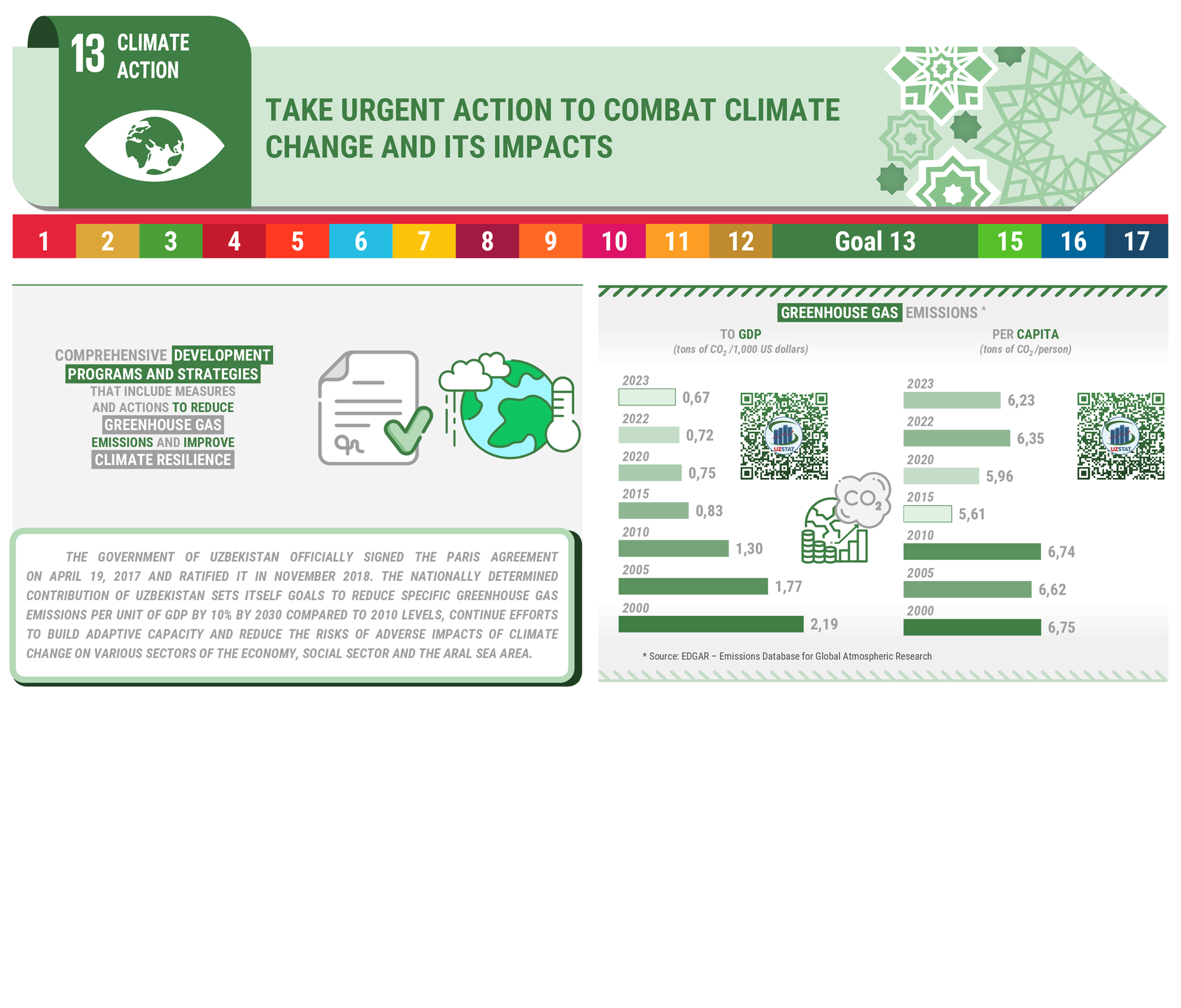The world is on the brink of a climate catastrophe, and current actions and plans to address the crisis are insufficient. Without transformative action starting now and within the current decade to reduce greenhouse gas emissions deeply and rapidly in all sectors, the 1.5°C target will be at risk and with it the lives of more than 3 billion people. Failure to act leads to intensifying heatwaves, droughts, flooding, wildfires, sea-level rise and famines. Emissions should already be decreasing now and will need to be cut by almost half by 2030 – a mere seven years from now. To combat climate change and its impacts by 2030, urgent and transformative action is needed to meet the commitments under the Paris Agreement across mitigation and adaptation efforts.
The number of deaths and missing persons due to disasters per 100,000 populations decreased from 1.64 during the 2005–2015 period to 0.86 from 2012 to 2021. The average disaster mortality stood at 47,337 in absolute terms from 2015 to 2021. However, the number of persons affected by disasters per 100,000 people rose from 1,198 between 2005 and 2015 to 2,113 between 2012 and 2021.
The increase in global temperatures has already reached 1.1°C, due to increasing global greenhouse gas emissions, which reached record highs in 2021. Real-time data from 2022 show emissions continuing an upward trajectory.
Uzbekistan is among the countries most vulnerable to climate change. Since 1880 the average annual temperature in the country has increased by 1.6 degrees Celsius (from 13.2 to 14.8 degrees), exceeding the global average. It is predicted that in 2030-2050 the temperature in the Central Asian region may increase by another 1.5-3 degrees Celsius. Here, the largest temperature increase is expected in Prearalie, because specific local climatic changes are taking place there due to the desiccation of the Aral Sea.
Climate change and the natural disasters triggered by this process pose certain risks to food security, the well-being of the population and the development of Uzbekistan, a country where the contribution of the agricultural sector to GDP remains quite high.
A sharp change in temperature conditions, a decrease in water resources, an increase in natural disasters and a decrease in agricultural productivity are serious risks for the sustainable development of our region. Climate change impacts disproportionately affect the most vulnerable.
A third of the total population lives in areas of natural hydrometeorological disasters (droughts, mudflows, landslides, floods, avalanches, frosts, dust storms, heat waves), where the situation may worsen due to increased precipitation, temperature and evaporation.
The Ministry of Emergency Situations report on the work carried out in 2020 to protect the population and territories of Uzbekistan from emergencies noted that there were 53 natural emergencies in the country in 2020.
Direct economic losses due to natural disasters in GDP amounted to 0.024 percent. In the global volume of CO2 emissions into the atmosphere, the share of Uzbekistan decreased from 0.27 percent in 2018 to 0.25 percent in 2019.

National Tasks
Target 13.2. Integrate climate change measures into national policies, strategies and planning.
Target 13.3. Improve education, awareness-raising and human and institutional capacity on climate change mitigation, adaptation, impact reduction and early warning.
National indicators
| NATIONAL INDICATORS | 2000 | 2001 | 2002 | 2003 | 2004 | 2005 | 2006 | 2007 | 2008 | 2009 | 2010 | 2011 | 2012 | 2013 | 2014 | 2015 | 2016 | 2017 | 2018 | 2019 | 2020 | 2021 | 2022 | 2023 | 2024 | |
| 1 | Indicator 13.2.1.1. Comprehensive development programs and strategies that include measures and actions to reduce greenhouse gas emissions and improve climate resilience. | - | - | - | - | - | - | - | - | - | - | - | - | - | - | - | - | - | - | - | 2 | 2 | 15 | 8 | 9 | 10 |

